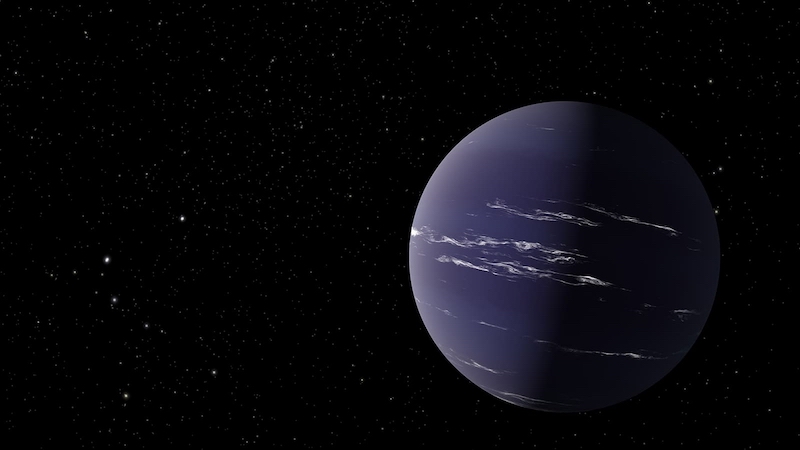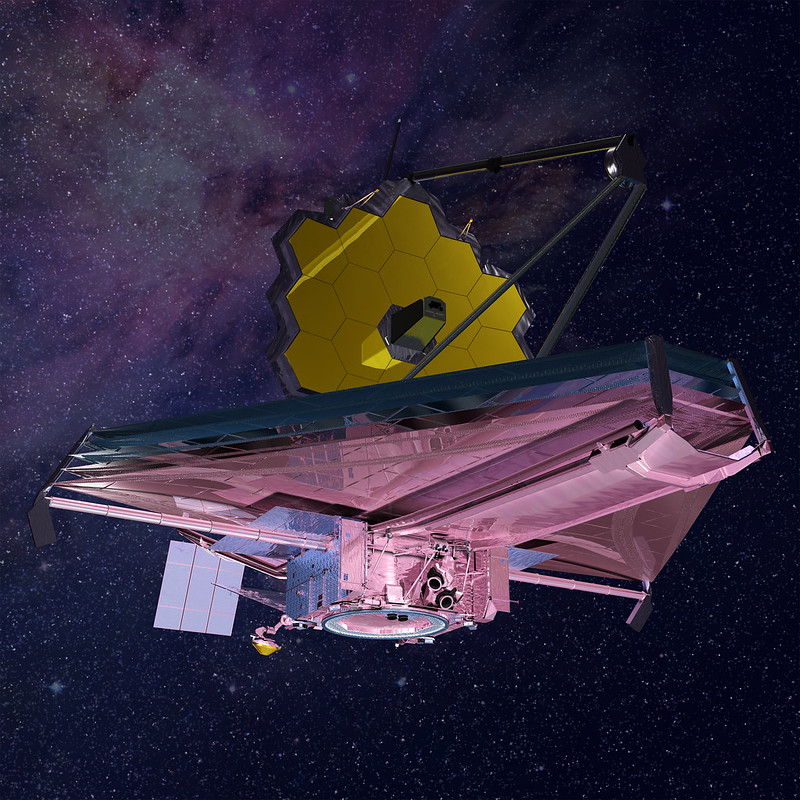
In June, scientists at NASA’s Jet Propulsion Laboratory (JPL) and the University of New Mexico announced the discovery of a new exoplanet, a mini-Neptune, some 90 light-years from Earth. Called TOI-1231 b, it orbits a small red dwarf (or M dwarf) star every 24 days. This world is less massive than planet Neptune in our own solar system. But it resembles Neptune in that it appears to have a thick atmosphere. The researchers said they’re excited about this planet because it:
… offers exciting research opportunities thanks to the planet’s substantial atmosphere, small star, and how fast the system is moving away from the Earth.
The researchers submitted a preprint version of the new research paper to arXiv on May 17, 2021 (last revised on June 8).
Substantial atmosphere
NASA’s orbiting planet-hunter TESS first revealed this planet’s existence in 2019. Further confirmation came via the Planet Finder Spectrograph on the Magellan Clay telescope at Las Campanas Observatory in Chile.
How do they know this mini-Neptune’s atmosphere is deep? Lead author Jennifer Burt of NASA’s Jet Propulsion Laboratory in Pasadena, California, explained in a statement:
Working with a group of excellent astronomers spread across the globe, we were able to assemble the data necessary to characterize the host star and measure both the radius and mass of the planet. Those values in turn allowed us to calculate the planet’s bulk density and hypothesize about what the planet is made out of.
TOI-1231 b is pretty similar in size and density to Neptune, so we think it has a similarly large, gaseous atmosphere.

Small star
Another key to the excitement surrounding this planet is the fact that it orbits a small star. That fact makes it easier to study than if were orbiting a larger, brighter star. Diana Dragomir of the University of New Mexico, a collaborator on the study, noted:
M dwarfs are smaller and possess a fraction of the sun’s mass and have low luminosity. Because an M dwarf is smaller, when a planet of a given size transits the star, the amount of light that is blocked out by the planet is larger, making the transit more easily detectable.
Imagine an Earth-like planet passing in front of a star the size of the sun, it’s going to block out a tiny bit of light. But if it’s passing in front of a star that’s a lot smaller, the proportion of light that’s blocked out will be larger.
In a sense, this creates a larger shadow on the surface of the star, making planets around M dwarfs more easily detectable and easier to study.
Moving fast away from Earth
These scientists explained:
Another way to study the planet’s atmosphere is to investigate whether gas is being blown away, by looking for evidence of atoms like hydrogen and helium surrounding the planet as it transits across the face of its host star.
Generally, hydrogen atoms are almost impossible to detect because their presence is masked by interstellar gas. But this planet-star system offers a unique opportunity to apply this method because of how fast it’s moving away from the Earth.
Does it have water clouds?
TOI-1231 b is one of the coolest smaller exoplanets found so far. The planet has an estimated temperature of only 140 degrees Fahrenheit (60 degrees Celsius). That sounds warm, warmer than a summer day on Earth. But TOI-1231 b is eight times closer to its star than the Earth is to the sun. Given that closeness, its temperature is surprisingly similar to that of Earth.
It’s similar thanks to its cooler and less-bright host star.
Astronomers had previously determined that exoplanets as cool as TOI-1231 b might have high-altitude clouds in their atmospheres. That’s interesting, of course, but it also makes it more difficult to figure what gases are in the atmosphere.
One such world, K2-18 b, shows water in its atmosphere. This world is similar in size and temperature range to TOI-1231 b. Could TOI-1231 b also have water? As Burt noted:
TOI-1231 b is one of the only other planets we know of in a similar size and temperature range, so future observations of this new planet will let us determine just how common (or rare) it is for water clouds to form around these temperate worlds.

Not a rocky world
Even if TOI-1231 b does have water in its atmosphere, it still isn’t very Earthlike. Data so far indicate it’s more of a gaseous world with a deep atmosphere, not a rocky planet surrounded by a thinner atmosphere, like Earth. As Dragomir explained:
The low density of TOI-1231 b indicates that it is surrounded by a substantial atmosphere rather than being a rocky planet. But the composition and extent of this atmosphere are unknown! TOI-1231 b could have a large hydrogen or hydrogen-helium atmosphere, or a denser water vapor atmosphere. Each of these would point to a different origin, allowing astronomers to understand whether and how planets form differently around M dwarfs when compared to the planets around our sun, for example.
Looking ahead
So how will astronomers study the atmosphere of TOI-1231 b? Because the planet is bright in the near-infrared, it’ll be ideal for future observations by telescopes like the Hubble Space Telescope and the upcoming James Webb Space Telescope.
In fact, Hubble is scheduled to take some new observations later this month. Dragomir said:
Our upcoming Hubble observations will begin to answer these questions, and the Webb promises an even more thorough look into the planet’s atmosphere.
Not alike, but similar
Thousands of exoplanets have been discovered already, but most of the planetary systems found so far don’t resemble ours much. TOI-1231 b is one world that does more closely resemble planets in our solar system, for example, Uranus or Neptune. It’s still decidedly unique, however. So far, all exoplanets are unique; like snowflakes, no two are alike. As Burt explained:
One of the most intriguing results of the last two decades of exoplanet science is that, thus far, none of the new planetary systems we’ve discovered look anything like our own solar system. They’re full of planets between the size of Earth and Neptune on orbits much shorter than Mercury’s, so we don’t have any local examples to compare them to.
This new planet we’ve discovered is still weird, but it’s one step closer to being somewhat like our neighborhood planets.
Compared to most transiting planets detected thus far, which often have scorching temperatures in the many hundreds or thousands of degrees, TOI-1231 b is positively frigid.
Dragomir added:
This planet joins the ranks of just two or three other nearby small exoplanets that will be scrutinized with every chance we get and using a wide range of telescopes, for years to come. So keep an eye out for new TOI-1231 b developments!

Bottom line: Scientists at JPL and the University of New Mexico say that a newly discovered mini-Neptune’s deep atmosphere is ideal for study by space telescopes.
Source: TOI-1231 b: A Temperate, Neptune-Sized Planet Transiting the Nearby M3 Dwarf NLTT 24399











